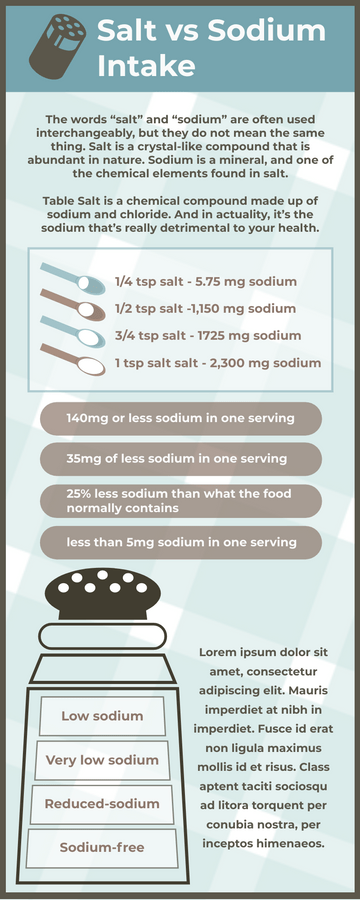Salt vs Sodium Intake Infographic
Visual Paradigm Online is a powerful online infographic maker that enables users to create professional-looking designs without the need for advanced graphic design skills. With an intuitive drag-and-drop interface and a wide range of customizable templates to choose from, users can quickly and easily create stunning infographics, reports, and presentations that capture their audience’s attention.
The online infographic tool includes a rich library of graphic design templates that users can choose from. These templates cover a wide range of themes and topics, from business and marketing to education and healthcare. Each template is fully customizable, allowing users to add their own text, images, and branding elements to create a personalized design.
In conclusion, Visual Paradigm Online is the perfect tool for businesses and organizations that need to create high-quality infographics quickly and easily. With its intuitive interface, customizable templates, and powerful design tools, it’s easy to create a professional-looking infographic that captures your audience’s attention and communicates your message effectively. Check out more about Visual Paradigm Online’s graphic design editor and graphic design template library on our website!
More about Visual Paradigm Online’s graphic design editor: https://online.visual-paradigm.com/infoart/
Graphic design template library: https://online.visual-paradigm.com/infoart/templates/
How does salt affect our bodies?
Salt, or sodium chloride, is an essential nutrient that our bodies need to function properly. It helps regulate fluid balance, maintain blood pressure, transmit nerve impulses, and aid in muscle and heart function. However, consuming too much salt can have negative effects on our health.
Excessive salt intake can lead to high blood pressure, which is a major risk factor for heart disease and stroke. It can also contribute to the development of other health problems such as kidney disease, stomach cancer, and osteoporosis. Additionally, a high-salt diet can cause bloating, dehydration, and thirst.
It’s important to note that most people consume more salt than they need. The recommended daily intake of salt is less than 2,300 milligrams per day for adults, or less than 1,500 milligrams per day for those at risk of high blood pressure or with certain medical conditions. However, the average person consumes around 3,400 milligrams of salt per day, largely due to the high amounts of salt added to processed and packaged foods.
To maintain a healthy balance, it’s recommended to limit salt intake, choose fresh and minimally processed foods, and use herbs and spices to flavor food instead of salt.


